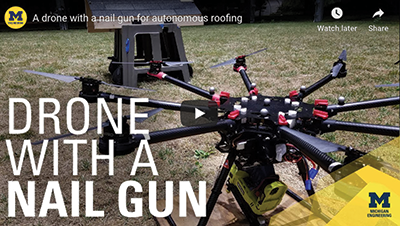App can help identify construction design hazards
Researchers at Glasgow Caledonian University in Scotland have introduced a multimedia app capable of identifying construction hazards, according to www.constructiondive.com. Intended to assist architects and designers, the app uses video and images to identify hazards related to building design elements.
A team of researchers led by Glasgow Caledonian University Prof. Billy Hare selected 40 designers to test the app. The experienced and novice architects and engineers were instructed to review a set of computer-aided design drawings, with half the participants looking for potential design-related hazards using the app and the other half using the internet. Participants who used the app identified 599 hazards—three to five times more incidences than participants who used the internet. Following the successful test, researchers believe the app can be used to improve the health and safety of construction workers, as well as future occupants and building users. They now are looking for developers to help produce a prototype digital app that can be rolled out to the construction industry.
Michigan team demonstrates shingle-nailing drone

|
A team at the University of Michigan, Ann Arbor, has demonstrated an octocopter capable of attaching asphalt shingles to roofs with a nail gun, according to news.umich.edu. The autonomous aerial vehicle positions the nail gun on a nailing point, places the nail and moves to the next point without needing a human at the controls.
“For me, the biggest excitement of this work is in recognizing that autonomous, useful, physical interaction and construction tasks are possible with drones,” says Ella Atkins, a professor of aerospace engineering and robotics.
Drones currently can address tasks that pose fall risks by inspecting bridges, wind turbines and cell towers. Atkins says the natural next step is to upgrade from surveillance alone to performing physical tasks.
Atkins’ team used a system of markers and stationary cameras to enable the octocopter to precisely locate itself in space. They used this system to tell the octocopter where the nails should go. To fire the nail gun, they first measured the force needed to compress the point of the nail gun, which must be done before a nail will deploy. They then wrote software that would allow the octocopter to apply that force.
The off-the-shelf version of the electric nail gun requires a trigger to be compressed, as well, but the team turned that into a virtual switch that activated when the octocopter was in position to place a nail.
For now, the drone is slow compared with humans performing roofing work.
“Initially, we tried using faster approach speeds to minimize nailing time,” says Matthew Romano, a robotics Ph.D. student. “However, for those attempts, the nail gun tip often bounced off the roof, which meant it either wouldn’t trigger or it would trigger in the wrong place.”
In addition to speed, the team identified other needed improvements. For example, the drone should be powered by tether rather than battery, which would allow it to run indefinitely. Additionally, an air line running alongside the power cable could make the nail gun a more effective pneumatic model.
A paper regarding the team’s work, “Nailed it: Autonomous roofing with a nailgun-equipped octocopter,” was submitted to the International Conference on Robotics and Automation. The study was funded by the National Science Foundation.



